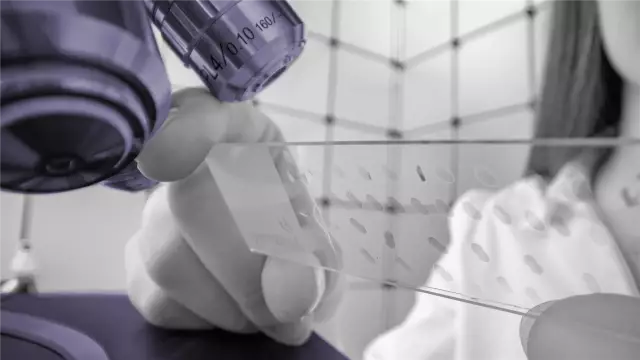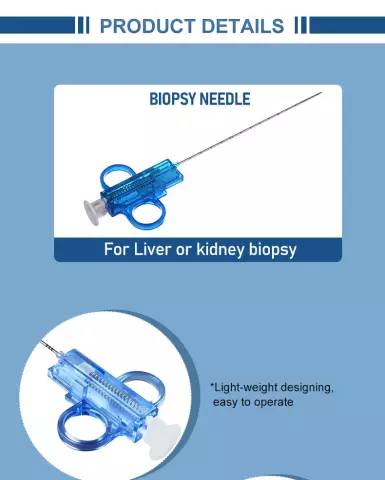- Author Rachel Wainwright [email protected].
- Public 2023-12-15 07:39.
- Last modified 2025-11-02 20:14.
Biopsy
I. Biopsy (biopsia; Greek bios - life related to life, to life processes + Greek opsis - vision, visual perception) - an intravital collection of a small amount of tissue for microscopic examination for diagnosis.
Biopsy types:
- Aspiration - a biopsy of the contents of hollow organs and body cavities performed with the help of special instruments or by aspiration through a syringe needle;
- Incisional (synonym: excisional biopsy) - produced by excision of a piece of tissue;
- Open (synonym: operating biopsy) - an incisional biopsy performed with a deep location of the focus. For its implementation, the surface tissues are preliminarily dissected;
- Sighting - carried out under visual observation during endoscopy with the help of special devices (forceps and so on) brought through the endoscope to the area under study;
- Puncture - in which biological material for research is removed by puncture;
- Stereotaxic - performed using the stereotaxic method;
- Total - in which the entire pathologically altered area serves as the test material; carried out more often with small sizes and superficial locations of the foci of the disease;
- Transurethral (Latin trans - through + Greek urethra - urethra) - incisional biopsy (for example, the wall of the bladder or prostate gland) carried out with the use of special instruments (operational cystoscope, resectoscope) introduced into the urethra.
II. Biopsy - microscopic examination for the diagnosis of intravital excised or otherwise removed organs and tissues.
Found a mistake in the text? Select it and press Ctrl + Enter.






